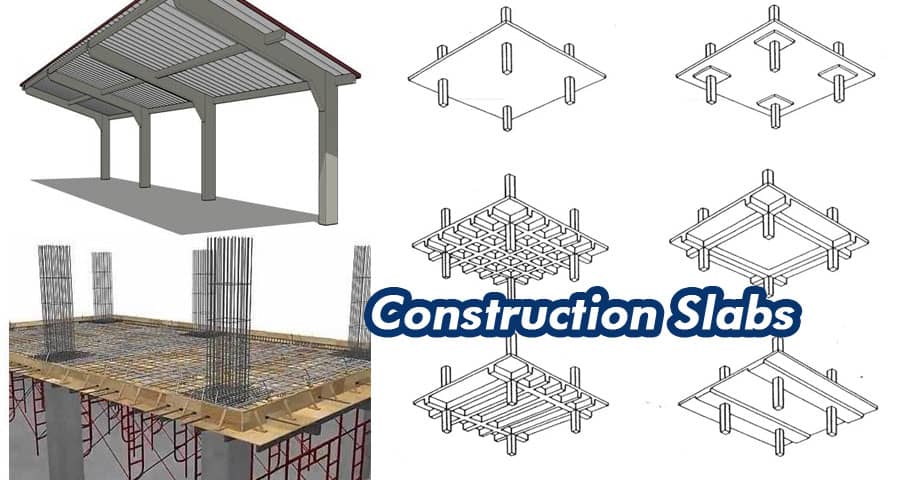Exploring Construction Slabs: Types, Uses, and Applications

Construction slabs are indispensable components in various building projects, offering structural support, stability, and aesthetic appeal. Understanding the different types, uses, and applications of construction slabs is crucial for architects, engineers, builders, and homeowners alike.
Types of Construction Slabs
- Concrete Slabs: Concrete slabs are among the most common types used in construction. They are versatile, durable, and suitable for various applications, including floors, roofs, and pavements. Reinforced concrete slabs offer enhanced strength, making them ideal for heavy-duty applications such as industrial flooring and bridge decks.
- Steel Slabs: Steel slabs, fabricated from structural steel, offer exceptional strength-to-weight ratio, making them ideal for large-span structures such as bridges and high-rise buildings. Steel slabs are highly customizable and can be prefabricated off-site to expedite construction processes.
- Timber Slabs: Timber slabs, crafted from hardwood or engineered wood products, lend a natural and rustic charm to architectural designs. They are commonly used for flooring, decking, and interior finishes in residential and commercial buildings. Timber slabs require proper treatment and maintenance to ensure longevity and structural integrity.
- Composite Slabs: Composite slabs combine different materials, such as concrete and steel, to harness the unique properties of each material. These slabs offer synergistic benefits, including increased strength, stiffness, and fire resistance. Composite slabs are popular in multi-story buildings, where lightweight construction is desirable.
Uses of Construction Slabs
- Flooring: Construction slabs serve as foundational elements for flooring systems in residential, commercial, and industrial buildings. Depending on the requirements of the space, various types of slabs, such as concrete, steel, or timber, may be employed to achieve the desired functionality and aesthetics.
- Roofing: Roof slabs provide overhead protection from the elements while enhancing the architectural design of a building. Steel and concrete slabs are commonly used for roofing applications due to their durability, weather resistance, and ability to support rooftop installations such as solar panels and HVAC equipment.
- Pavements: Construction slabs are essential for the construction of pavements, walkways, and driveways in both urban and rural settings. Concrete slabs are preferred for their durability, low maintenance, and ability to withstand heavy traffic loads, making them suitable for roads, sidewalks, and parking lots.
- Structural Support: Slabs play a crucial role in providing structural support and stability to buildings and infrastructure projects. Reinforced concrete slabs are widely used for their load-bearing capacity and resistance to seismic forces, ensuring the safety and longevity of the structures they support.
Applications of Construction Slabs
- Residential Construction: In residential construction, slabs are used for foundation systems, flooring, and roofing to create sturdy and functional living spaces. Timber slabs are often favored for their warmth and natural beauty, while concrete slabs provide durability and thermal mass for energy efficiency.
- Commercial Buildings: Commercial buildings utilize construction slabs for a wide range of applications, including office floors, retail spaces, and industrial facilities. Composite slabs are commonly employed to meet the diverse structural and architectural requirements of commercial projects, offering versatility and cost-effectiveness.
- Infrastructure Projects: Infrastructure projects such as bridges, highways, and airports rely on robust construction slabs to support heavy traffic loads and withstand environmental factors. Steel slabs, with their high strength and durability, are preferred for long-span structures that require exceptional structural performance and reliability.
- Urban Development: In urban development projects, construction slabs play a pivotal role in shaping the built environment and enhancing livability. From pedestrian walkways to public parks, slabs contribute to the functionality, safety, and aesthetic appeal of urban spaces, fostering community engagement and social interaction.
Conclusion
Construction slabs are essential components in the built environment, offering structural integrity, functionality, and architectural versatility. By understanding the different types, uses, and applications of construction slabs, professionals in the construction industry can make informed decisions to optimize project outcomes and deliver high-quality buildings and infrastructure.
